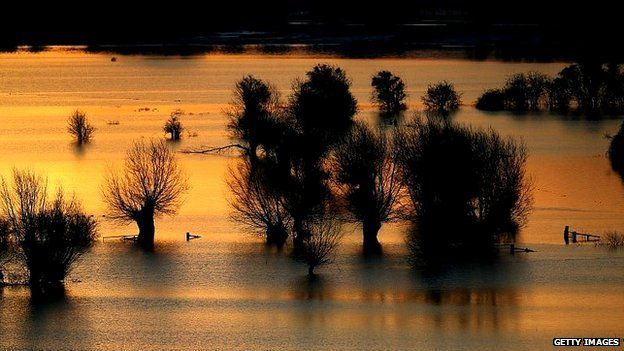'Growth drives UK flooding problems'
- Published

Part of the UK's problem with flooding is self-imposed, new research suggests.
The study says the number of reported major flood events has increased, but in parallel with population growth and a boom in building in vulnerable areas.
It says it is unclear if climate change is implicated in recent flooding.
But the Southampton University team urges government to continue spending on flood defences as more homes are likely to be vulnerable due to sea level rise and more intense rainfall.
The researchers admit their study is a fragment of a complex picture. They have not, for instance, been able to account for the benefits of flood defence spending.
Neither have they factored in land use changes like road-building, ploughing grasslands or draining marshes - which all contribute to floods.
But looking at the broad picture, they conclude that when population growth and building growth are taken into account there is no rise in the number of reported major floods events over the past 129 years.
There has, though, been a rise in the number of reported small flood events.
The researchers cannot explain the disparity, although they agree it is possible that targeted flood defences are protecting the biggest areas at risk.
"It's a very complicated picture," the lead author Derek Clarke told BBC News.
"There are many factors we can't take into account - but it is clear that when you take population growth and building out of the equation, there has been no increase in major floods - in fact there is no pattern at all over 100 years."
Dr Clarke said he had been misquoted as ruling out climate change as a contributor to recent floods.
"We have categorically not ruled out a link between climate change and flooding," he told BBC News. "We just can't demonstrate that there is a link.
"Society clearly needs to continue spending on flood defences because there are larger number of people at risk. And they must be very aware to acknowledge that with smaller building schemes in vulnerable areas you need to take precautions."
The study was published in the journal Hydrological Sciences.
It looked at data sets from 1884 to 2013 and found an upward trend in reported flooding, with events appearing more frequently towards the end of the 20th century, peaking in 2012 when annual rainfall was the second highest in over 100 years.
But the rise coincides with population growth from 38.2 million to 59.1 million and a tripling in the number of houses, from 7.7 million to 24.8 million.
Follow Roger on Twitter @rharrabin
- Published17 June 2014
- Published14 February 2014